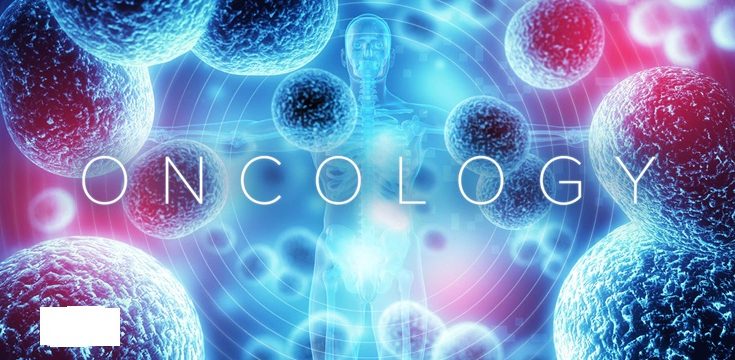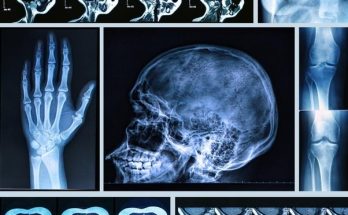Molecular Imaging and Targeted Therapy: A Powerful Partnership in Cancer Care
Molecular imaging and targeted therapy represent a paradigm shift in cancer care, moving away from traditional, less specific approaches to highly personalized treatments. These two fields are intricately linked, with molecular imaging playing a crucial role in guiding and monitoring targeted therapies.
I. Molecular Imaging: Visualizing the Invisible
Molecular imaging allows us to visualize and quantify biological processes at the molecular level, providing insights into the inner workings of cells and tissues. Unlike traditional imaging techniques (CT, MRI) that primarily show anatomical structure, molecular imaging reveals functional and metabolic activity.
- Key Principles:
- Targeted Tracers: Molecular imaging utilizes tracers, which are molecules designed to bind to specific targets within the body, such as cancer cells. These tracers are labeled with a radioactive isotope or other detectable marker.
- Imaging Modalities: Various imaging modalities are used to detect the tracer signal, including:
- Positron Emission Tomography (PET): Uses tracers labeled with positron-emitting isotopes. PET scans visualize metabolic activity, such as glucose uptake by cancer cells.
- Single-Photon Emission Computed Tomography (SPECT): Uses tracers labeled with single-photon-emitting isotopes. SPECT scans can visualize various biological processes, including blood flow and receptor binding.
- Optical Imaging: Uses tracers labeled with fluorescent or bioluminescent molecules. Primarily used in preclinical research but has potential for clinical applications.
- Molecular MRI: Uses contrast agents that bind to specific targets, enhancing the MRI signal.
- Applications in Oncology:
- Early Cancer Detection: Molecular imaging can detect cancer at an earlier stage, when it is more likely to be curable.
- Diagnosis and Staging: Molecular imaging can help to diagnose cancer and determine its stage, including whether it has spread to other parts of the body.
- Treatment Planning: Molecular imaging can guide treatment planning by identifying the most appropriate therapy and the optimal target for radiation therapy.
- Monitoring Treatment Response: Molecular imaging can assess how well a cancer treatment is working by visualizing changes in tumor activity.
- Personalized Medicine: Molecular imaging can help to personalize cancer treatment by identifying which therapies are most likely to be effective for a particular patient based on the molecular characteristics of their tumor.
II. Targeted Therapy: Precision Strikes Against Cancer
Targeted therapies are drugs or other treatments that are designed to attack cancer cells specifically, while minimizing damage to healthy tissues. They work by targeting specific molecules or pathways that are essential for cancer cell growth and survival.
- Key Principles:
- Target Identification: Researchers identify molecules or pathways that are uniquely expressed or abnormally activated in cancer cells.
- Drug Development: Drugs are developed that specifically target these molecules or pathways.
- Personalized Approach: Targeted therapies are most effective when they are matched to the specific molecular characteristics of a patient’s tumor.
- Types of Targeted Therapies:
- Small Molecule Inhibitors: Drugs that block specific enzymes or proteins involved in cancer cell growth and signaling.
- Monoclonal Antibodies: Antibodies that bind to specific targets on cancer cells, triggering an immune response or blocking cell growth.
- Immunotherapies (a subset of targeted therapies): Boost the body’s immune system to fight cancer by targeting specific immune checkpoints or other immune-related molecules.
- Gene Therapies: Introduce or modify genes within cancer cells to disrupt their growth or make them more susceptible to other treatments.
- Examples of Targeted Therapies:
- EGFR inhibitors: Target the epidermal growth factor receptor, used to treat some lung cancers and colorectal cancers.
- HER2 inhibitors: Target the HER2 protein, used to treat some breast cancers.
- VEGF inhibitors: Target vascular endothelial growth factor, used to treat some cancers by blocking blood vessel growth.
- Checkpoint inhibitors (e.g., pembrolizumab, nivolumab): Target immune checkpoints, used to treat various cancers by unleashing the immune system.
III. The Synergy of Molecular Imaging and Targeted Therapy:
Molecular imaging plays a crucial role in the development and use of targeted therapies.
- Target Identification and Validation: Molecular imaging can be used to identify and validate potential targets for therapy.
- Patient Selection: Molecular imaging can help to identify patients who are most likely to benefit from a specific targeted therapy based on the expression of the target in their tumor.
- Treatment Monitoring: Molecular imaging can be used to monitor the response of a tumor to targeted therapy, allowing for early detection of treatment failure and adjustment of therapy as needed.
- Drug Development: Molecular imaging can be used to track the delivery and activity of targeted therapies in preclinical and clinical studies.
IV. Challenges and Future Directions:
- Resistance Mechanisms: Cancer cells can develop resistance to targeted therapies over time. Research is focused on understanding these resistance mechanisms and developing new therapies to overcome them.
- Combination Therapies: Combining targeted therapies with other treatments, such as chemotherapy or radiation therapy, may be more effective than using them alone.
- Expanding the Target Landscape: Researchers are continuing to identify new targets for therapy.
- Improving Imaging Technologies: Advances in molecular imaging technologies are improving the sensitivity and specificity of imaging, allowing for earlier detection and more accurate assessment of treatment response.
- Personalized Cancer Care: The integration of molecular imaging and targeted therapy is a key step towards personalized cancer care, tailoring treatment to the individual patient and improving outcomes.
Molecular imaging and targeted therapy are transforming the landscape of cancer care, offering the potential for more effective and less toxic treatments. As our understanding of cancer biology continues to grow and new technologies are developed, these fields will play an even greater role in the fight against cancer.



